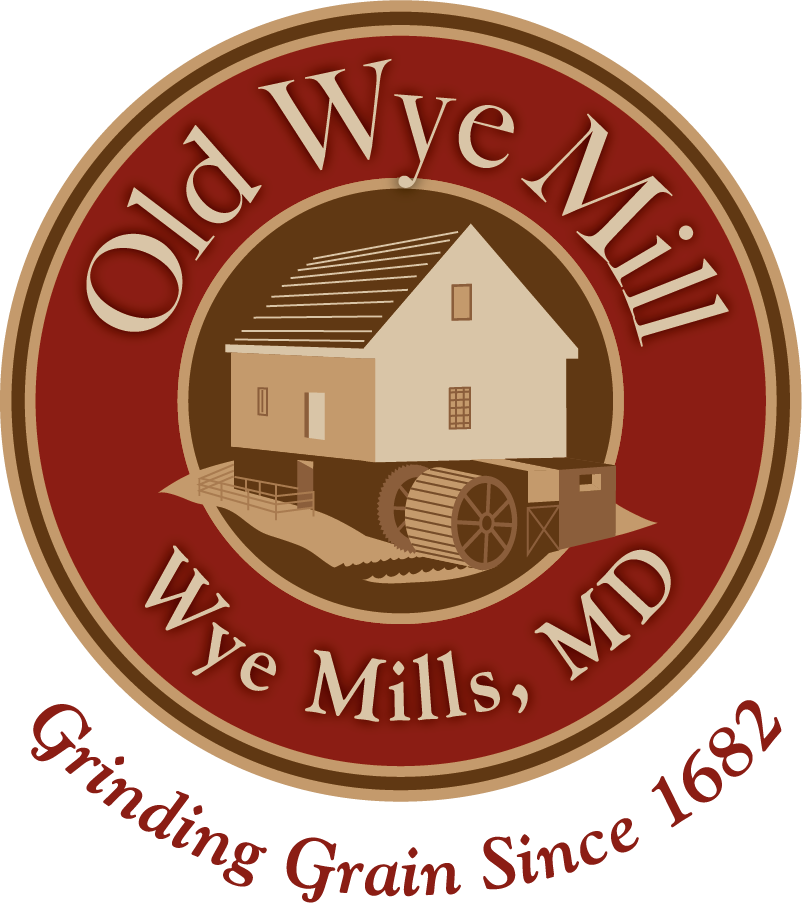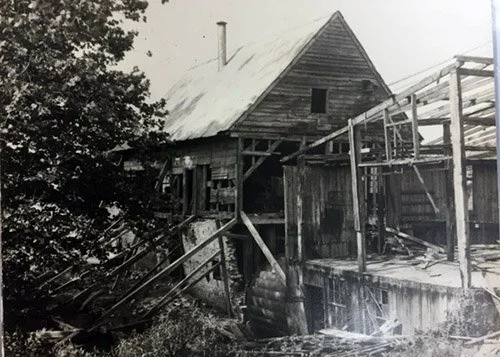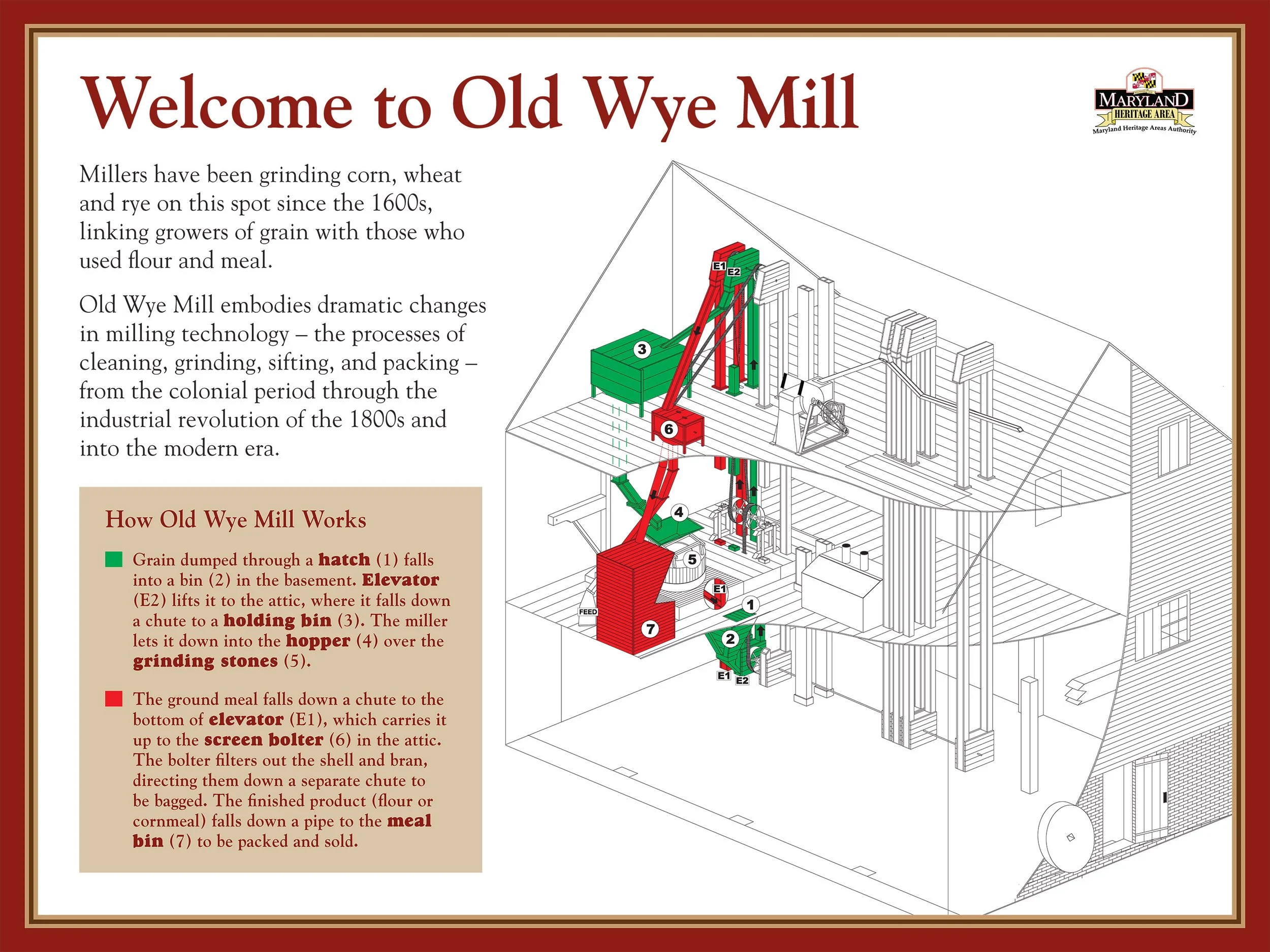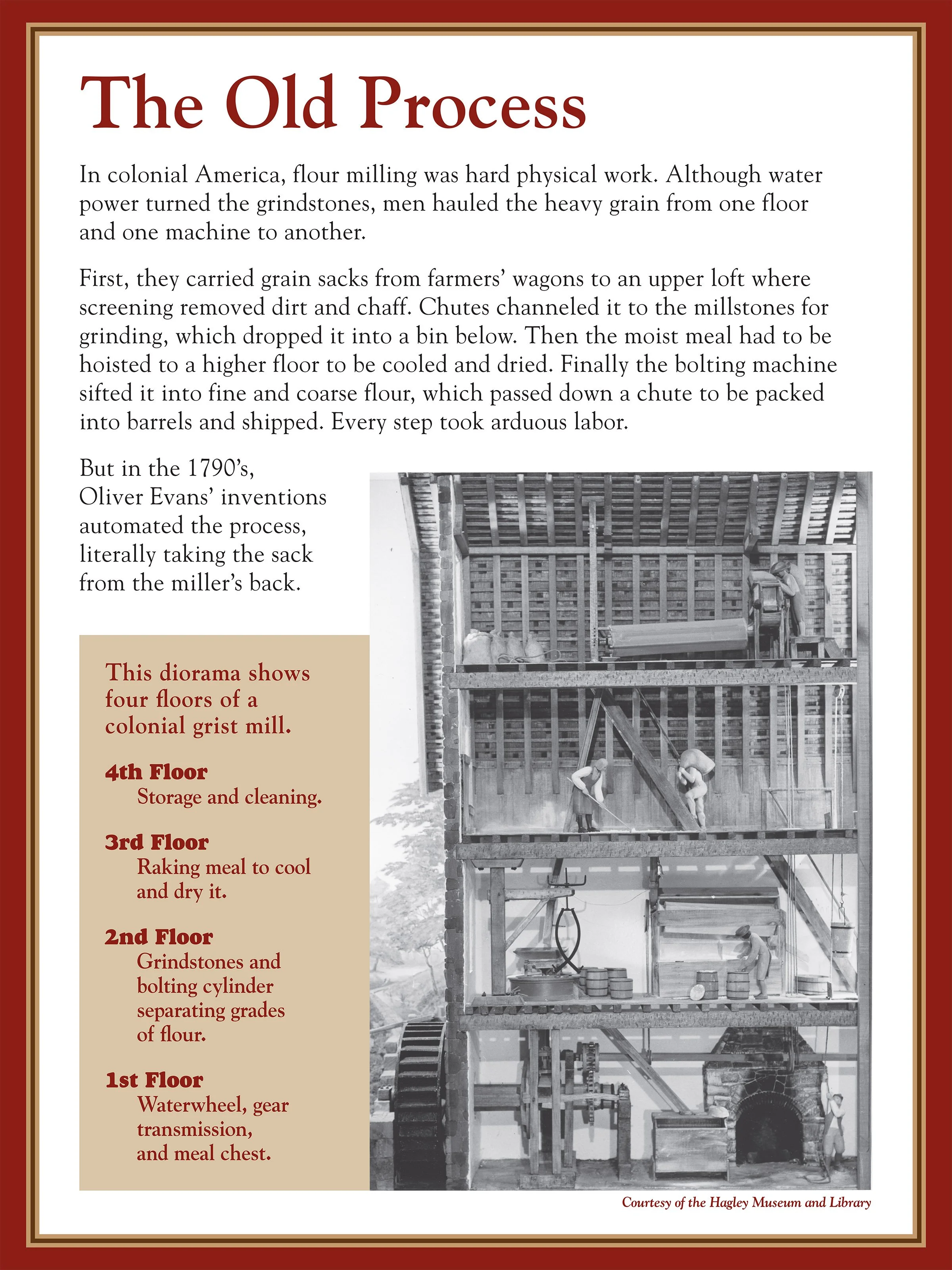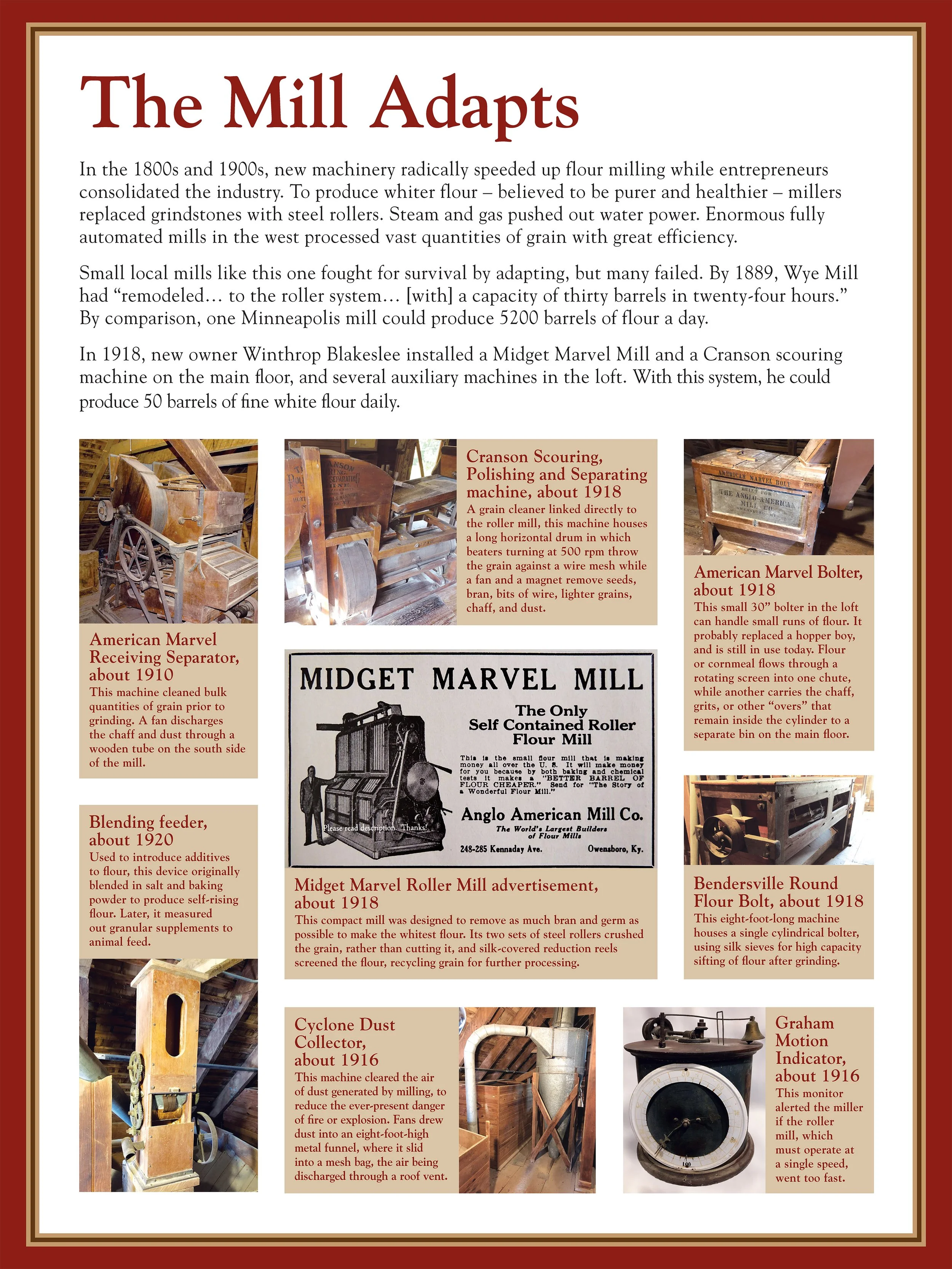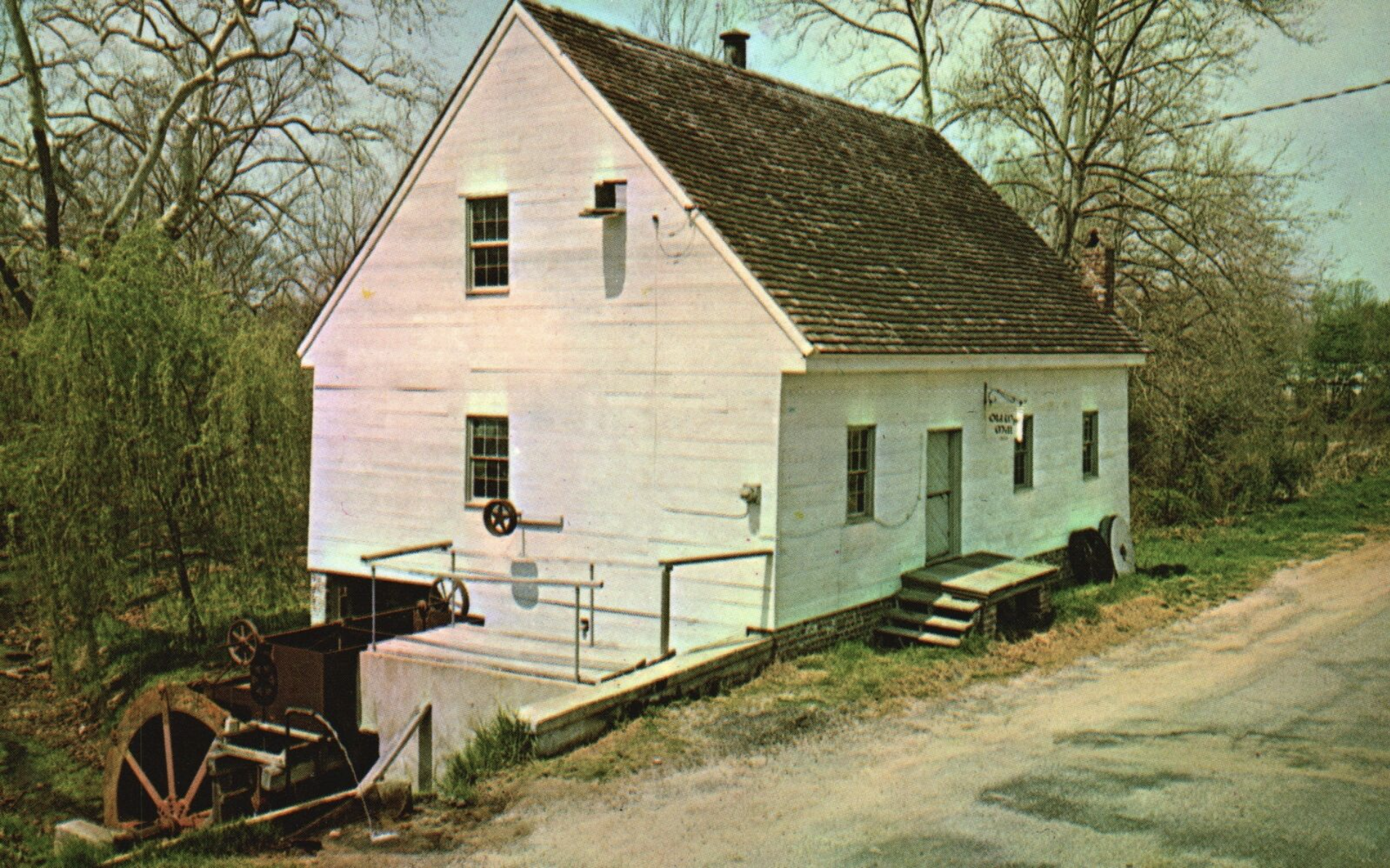
History
The Old Wye Mill before restoration in the 50’s.
History of Old Wye Mill
The Old Wye Mill, restored and open to the public today.
Out of hundreds of gristmills on the East Coast in colonial times, only a few survive—and fewer still operate. As the oldest working mill in Maryland, established in 1682, Old Wye Mill has witnessed three centuries of American history, from the plantation era through industrial revolution to the revival of sustainable artisanal flour.
Prominent colonial owners of the Mill included Richard Bennett III, Edward Lloyd III and IV (owners of Wye House) and Colonel William Hemsley. During the American Revolution, Hemsley was charged with procuring food for the Continental Army, shipping hundreds of barrels of flour across the Chesapeake Bay from Wye Mill and many others like it on Maryland’s Eastern Shore. Historians dubbed the Eastern Shore the “Breadbasket of the Revolution.”
Soon after independence, Oliver Evans, the country’s first great engineer and inventor, helped lay the foundations of the Industrial Revolution, pioneering the “continuous process,” the basis of automation. The Hopkins family of Quaker millers and storekeepers owned Wye Mill between 1821 and 1877. Starting in 1918, Winthrop Blakeslee was able to produce fifty barrels of fine white flour daily with his new Midget Marvel Mill, which crushed grain between rollers rather than grinding it.
Article documenting the sale of the Mill in 1899 to J.S. Sewell of Ruthsburg, MD
The State of Maryland purchased Old Wye Mill in 1953 and began to offer recreational fishing on the pond to the public. The Mill itself was badly damaged by Hurricanes Connie and Diane in 1955. Soon a grassroots effort began to restore the Mill with help from Preservation Maryland. By 1959, the Mill was running again.
Today, the Friends of Wye Mill, a volunteer-run non-profit, lovingly preserves and operates the Mill with funding from local and State grants, visitor contributions, and retail sales of stone-ground grain products.
